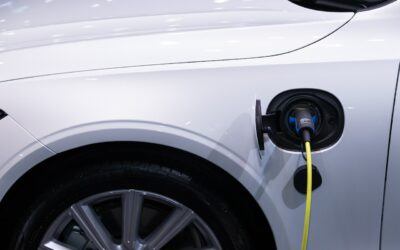This post was originally published on Eco Watch
Ofgem, the United Kingdom’s energy regulator, has approved a multi-billion-dollar low-carbon “electricity superhighway” to carry green power 300 miles from wind farms in northeast Scotland to northern England.
The Eastern Green Link is the longest undersea power cable in Great Britain and will be able to transmit enough renewable power for two million residences in England, a press release from Ofgem said.
“Ofgem is fully committed to supporting the government to meet its aims of getting clean power by 2030. Today’s announcement is a further step in putting the regulatory systems and processes in place to speed up network regulation to achieve its aim,” said Ofgem CEO Jonathan Brearley in the press release.
The cable is the first of 26 projects in Ofgem’s Accelerated Strategic Transmission Investment (ASTI) framework, which will improve grid capacity and save customers an estimated $1.93 billion.
The project is the biggest investment ever made in the British electric grid and will be paid for by energy bills, The Guardian reported.
Work on the cable — a partnership between multinational energy company SSE and Great Britain’s National Grid — is expected to start later this year, with electricity transmission to begin by 2029. Another project, led by the National Grid and Scottish Power, is expected to be approved within weeks.
“The projects delivered via Ofgem’s ASTI programme are a vital part of the work to upgrade the energy system and allow more renewable energy to be brought onto the grid. This will help to deliver Government’s goal of clean power by 2030 and reduce our reliance on volatile international gas markets,” Ofgem said in the press release.
Many rural communities have expressed concerns about the impact the new transmission projects would have on the countryside, reported The Guardian.
Director of the project Ricky Saez said it would “play a major role in bolstering energy security and contributing to net zero targets” while supporting local environmental initiatives.
“This is a commitment that will continue throughout the lifetime of the project and beyond, as we aim to be a positive force in the communities we operate,” Saez said, as The Guardian reported.
The Eastern Green Link cable will run between Aberdeenshire and a new North Yorkshire converter station beneath Britain’s eastern seabed.
“In the same way that we’ve exported {oil} from the North Sea for the last four decades and beyond, the same thing is the case with renewables,” said Claire Mack, chief executive of Scottish Renewables, as reported by the BBC.
Roughly 44 miles of the cable will be put underground onshore so that it can connect to converter stations and the grid, The Guardian reported.
“To move us forward towards clean power will require the biggest upgrade to the grid in decades. In turn these projects will unlock jobs, secure work for contractors and suppliers, and ultimately mean more secure energy supplies in the future. This is a crucial part of that jigsaw,” said Lawrence Slade, Energy Networks Association’s chief executive, as reported by The Guardian.
The post ‘Electricity Superhighway’ Between Scotland and England to Move Forward appeared first on EcoWatch.





0 Comments